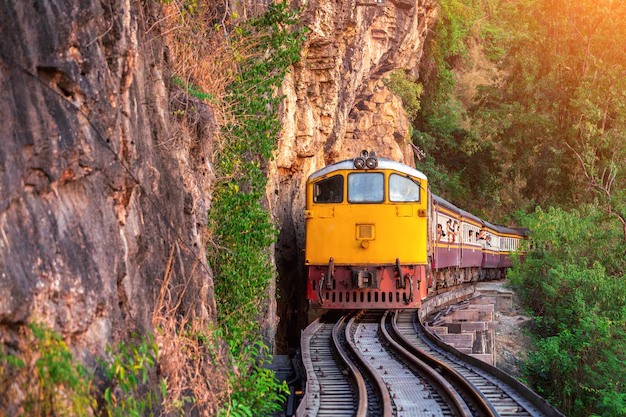The skill of weathering gives model trains more authenticity and realism. A popular Japanese electric multiple unit (EMU) train type with a long history and a stylish appearance is the kato 381 series weathering. In addition to improving the model’s visual attractiveness, weathering processes give it a distinctive, worn appearance that replicates the wear and tear of actual trains.
The Charm of Weathering
To simulate the ageing process of trains, model train enthusiasts use a method called weathering. To give the train a genuine, worn look, dirt, dust, rust, and other materials are added. This procedure may highlight the model’s fine features, making the kato 381 series weathering a unique addition to any collection.
Preparing for Weathering
Tools and Materials Needed
- Acrylic paints
- Pastels and weathering powders
- Airbrush or paintbrush
- Masking tape
- Cotton swabs
- Matte or satin varnish
- Reference photos of the 381 Series
Research and Planning
Obtain reference images of the actual Kato 381 Series trains before you begin. Seek for pictures that show paint fading, rust stains, and grime buildup. By doing this step, you can make sure that your weathering effects are historically correct and realistic.
Cleaning the Model
Begin by cleaning the model to remove any dust or grease. Use a soft cloth or a gentle cleaning solution to prepare the surface for paint and weathering.
Weathering Techniques
Fading and Paint Effects
Paint fading simulates the sun-bleached look of vintage railroads. The colours on the train’s body may be subtly faded using an airbrush or a thin coat of diluted acrylic paint. Pay attention to sections like the roof and sides that would naturally receive sunlight.
Dirt and Grime
Use pastels or weathering powders to simulate dirt and filth. Use a gentle brush to apply them, paying particular attention to the train’s lower sections and the area around the wheels. Blend the powders to provide a smooth transition between clean and unclean regions for a realistic appearance.
Rust and Corrosion
Any train model must include rust as a weathering component. Apply a mixture of rust-coloured acrylic paint sparingly to places that are susceptible to corrosion, such vents, undercarriages, and door edges. For more intricate application, use a sponge or a delicate brush.
Streaking Effects
Streaks of grime and rust add dynamic realism. Thin down acrylic paint and apply it vertically on the train’s body. Use a cotton swab or brush to blend and create natural-looking streaks.
Detailing Specific Areas
Roof and Pantographs
The kato 381 series weathering roof often accumulates filth, dirt, and soot. To replicate this appearance, use weathering powders that are either black or dark grey in colour. To emphasise wear, the pantographs may be aged with metallic paint and a hint of rust.
Wheels and Underframe
The wheels and underframe are key areas for heavy weathering. Use a mix of dark brown and black powders to simulate dirt and grease buildup. For added realism, dry brush metallic paint to highlight worn edges.
Windows and Doors
Add subtle streaks of grime around windows and doors. Use a fine brush and diluted paint for precise detailing. Be careful not to overdo it, as these areas should still maintain some cleanliness.
Sealing and Finishing
Applying Varnish
Once satisfied with the weathering effects, seal the model with a matte or satin varnish. This step protects the weathering work and gives the train a consistent finish.
Final Touches
Inspect the model for any areas that need additional detailing. Adjust the weathering effects as needed to achieve a balanced, realistic look.
Tips for Beginners
Start Small
If you’re new to weathering, start with light effects and gradually build up the details. It’s easier to add more weathering than to remove excess.
Experiment with Techniques
Weathering is an art, and there’s no one-size-fits-all approach. Experiment with different tools and materials to find what works best for you.
Use Reference Photos
Always refer to photos of real trains for guidance. They provide valuable insights into where dirt and rust naturally accumulate.
FAQs about kato 381 series weathering
What is the Kato 381 Series?
The Kato 381 Series is a model train representing the iconic Japanese EMU train, known for its streamlined design and historical significance.
Why is weathering important for model trains?
Weathering adds realism and depth to model trains, making them look more like their real-life counterparts.
What tools do I need for weathering?
Common tools include acrylic paints, weathering powders, airbrushes, brushes, masking tape, and varnish.
How can I avoid over-weathering?
Start with subtle effects and build gradually. Regularly compare your work to reference photos to maintain realism.
Can I remove weathering if I make a mistake?
Yes, you can remove unwanted weathering with a damp cloth or cotton swab before the paint dries. For dried paint, use a gentle solvent.
How do I protect my weathered model?
Seal the model with a matte or satin varnish to protect the weathering effects from wear and handling.
Is weathering suitable for all skill levels?
Yes, weathering can be done by beginners and advanced modelers alike. Start with basic techniques and progress to more intricate effects as you gain confidence.
Conclusion
These methods and procedures will help you turn your kato 381 series weathering model into a realistic work of art. A treasured addition to your collection, weathering not only improves a train’s aesthetic appeal but also provides insight into the years of service it has endured.










